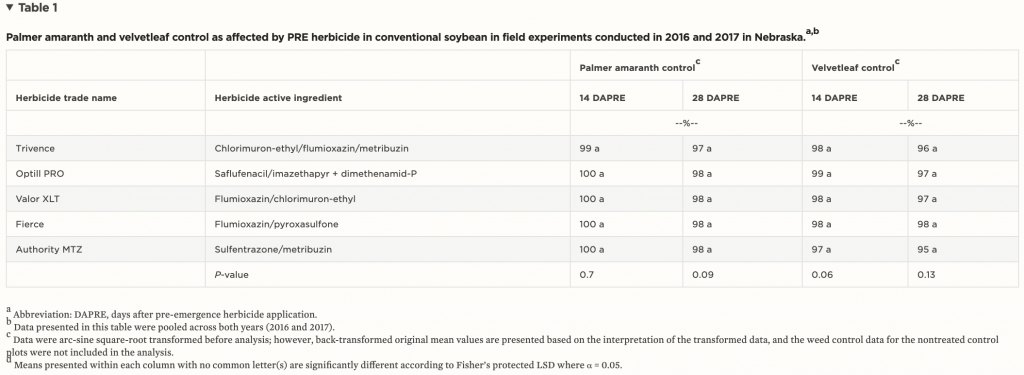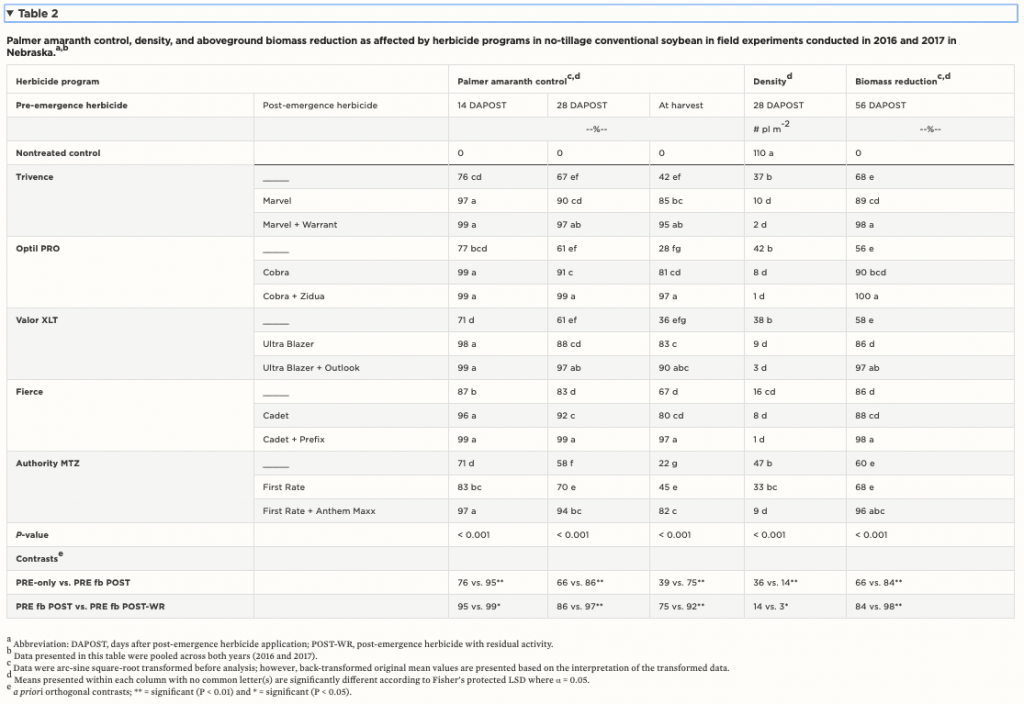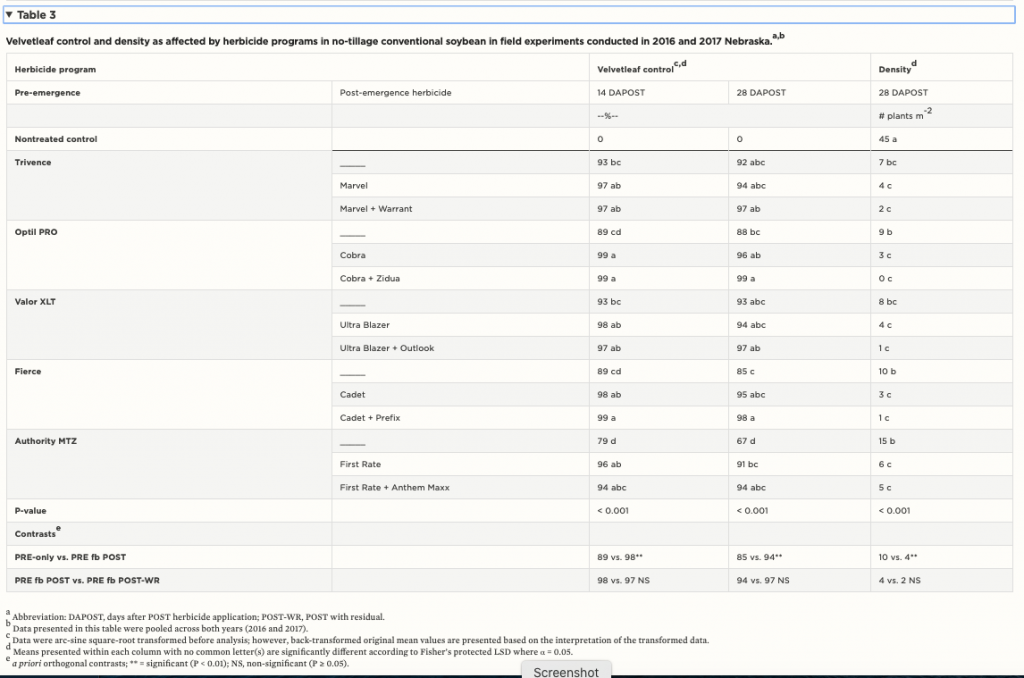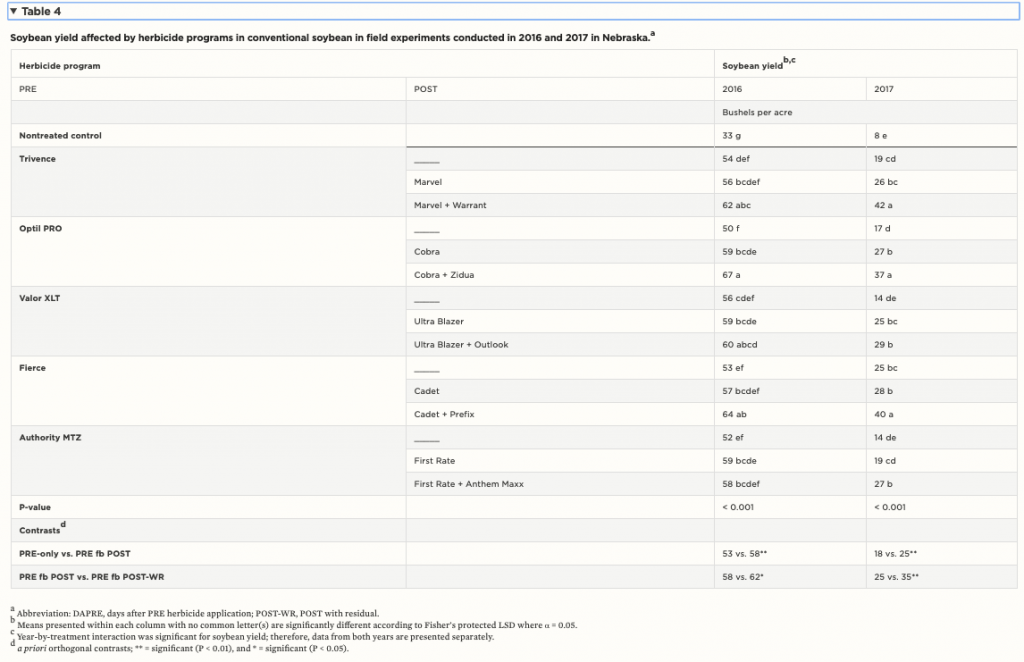Palmer Amaranth and Velvetleaf Control in Conventional Soybean Using Overlapping Residual Herbicide Programs
The cost of soybean seed has been increasing over the years, with herbicide-resistant soybean seed cost being higher than that of conventional soybean for having a technology fee. With the depressed corn and soybean prices in recent years in the United States, growers have shown interest in conventional soybean for better after-harvest incentives. A survey conducted in Nebraska in 2015 ranked Palmer amaranth and velvetleaf among the top six most problematic weeds in Nebraska (Sarangi and Jhala 2018). In Nebraska, Palmer amaranth biotypes resistant to acetolactate synthase (ALS)-, hydroxyphenylpyruvate dioxygenase (HPPD)-, photosystem (PS) II-inhibitors, and glyphosate have been confirmed.
Weed management in no-till conventional soybean is mostly herbicide-dependent; therefore, herbicide programs should be selected carefully that provide season-long weed control and high soybean yield. Unlike Roundup Ready- or LibertyLink soybean systems, there are few “rescue” POST herbicides available in conventional soybean, meaning that a pre-emergence (PRE) herbicide application is even more critical.
Field experiments were conducted in 2016 and 2017 at South Central Ag Lab, Clay Center, NE. Pre-emergence (PRE) and PRE followed by (fb) post-emergence (POST) herbicides, and PRE fb POST herbicide with residual (POST-WR) product tank-mixed were evaluated. Herbicides applied PRE including Trivence, Optil PRO, Valor XLT, Fierce, and Authority MTZ provided 95% to 100% control of Palmer amaranth and velvetleaf at 14 and 28 days after application (Table 1). Due to decline in the residual activities of the PRE soil-applied herbicides, PRE-only programs resulted in 66% control of Palmer amaranth at 28 DAPOST compared with 86% control for PRE fb POST programs (Table 2). Most of the PRE fb POST-WR programs resulted in greater than 97% control of Palmer amaranth at 28 DAPOST (Table 2). The PRE fb POST herbicide programs substantially improved velvetleaf control (98%) over the PRE-only herbicide programs (89% control) at 14 DAPOST (Table 3).



However, averaged across herbicide programs, velvetleaf control was similar in PRE fb POST-WR and PRE fb POST programs at 14 and 28 DAPOST. The year-by-treatment interaction was significant for soybean yield; therefore, yield data from 2016 and 2017 were presented separately. It is believed that the higher Palmer amaranth density in 2017 led to the lower soybean yield in all the treatments and nontreated control. Averaged across herbicide programs, PRE fb POST programs resulted in higher soybean yield compared to the PRE-only herbicide programs (Table 4). For more information read this article.

Reference: Sarangi D, Jhala AJ (2018) A statewide survey of stakeholders to access the problem weeds and weed management practices in Nebraska. Weed Technology 32:642-655
Source: University of Nebraska CropWatch

